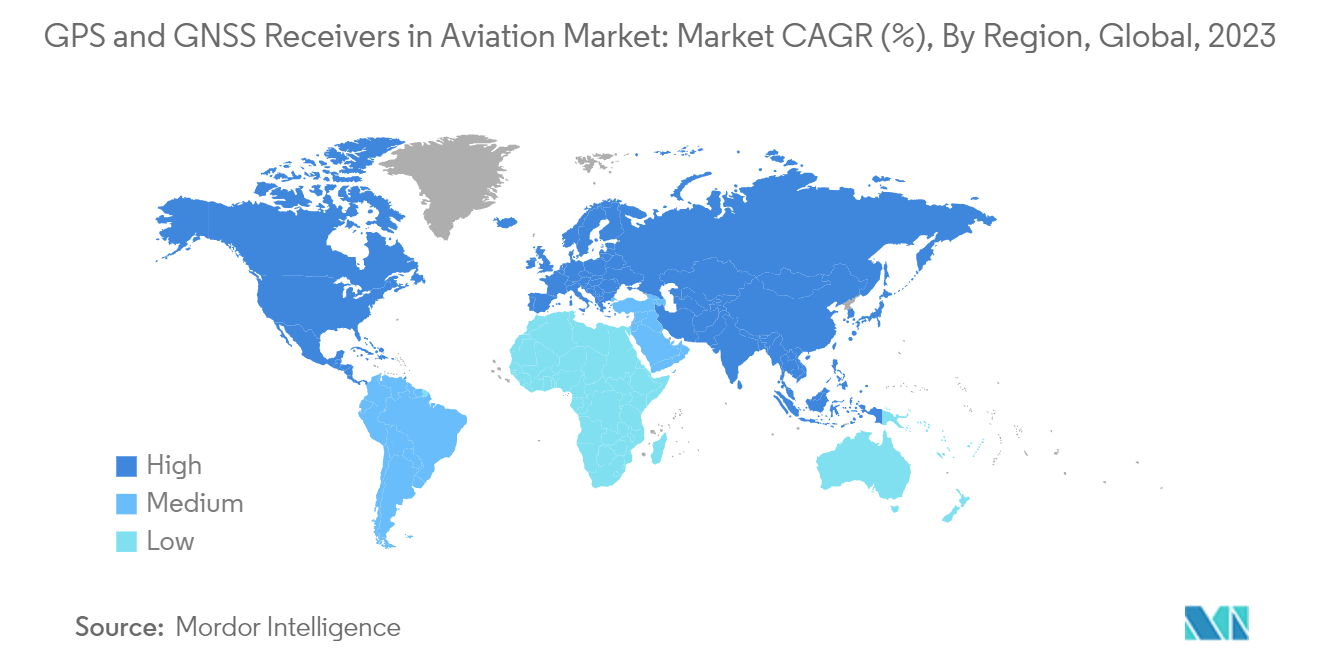Market Trends of GPS And GNSS Receivers In Aviation Industry
Military Aviation Segment is Anticipated to Grow with the Highest CAGR During the Forecast Period
- The military aviation segment is expected to show significant growth during the forecast period. The growth can be attributed to the increasing military expenditure by governments of all regions, rising demand for new military aircraft, and growing military modernization programs. Satellite navigation is very crucial for carrying out military missions for navigation purposes in enemy territories and is especially important in the absence of light in night missions. The military forces heavily rely on GNSS and GPS in order to obtain an accurate positioning of their own units, as well as the enemy force's positions.
- Several defense bodies also depend on GPS and GNSS technologies as it helps the forces to efficiently conduct their missions. The United States, China, India, the UK, Russia, and France are currently the world's largest military spenders, respectively. In August 2021, BAE Systems plc unveiled its ultra-small MicroGRAM-M global positioning system receiver compatible with next-generation M-Code military GPS that is resistant to jamming and spoofing. MicroGRAM-M is the world's smallest, lightest, and most power-efficient GPS receiver for size-constrained and other micro-applications.
- Countries are increasing their military budgets in order to modernize their military aircraft fleet. With the rise in military aircraft, the demand for GPS and GNSS receivers will also increase during the forecast period.

Asia Pacific Will Showcase Remarkable Growth During the Forecast Period
- Asia-Pacific is projected to show the highest growth during the forecast period. Growing expenditure on the aviation sector and growing demand for new aircraft, especially from China and India, boost the market growth across the region. According to the International Air Transport Association (IATA), China surpassed the United States and became the largest aviation market in the world in 2022. Furthermore, China is expected to reach a total of 1.5 billion aviation passengers by 2036.
- Also, the Indian civil aviation ministry announced that India would become the third-largest domestic aviation market in 2021. Furthermore, the procurement of next-generation fighter jets from India, China, and Japan will propel the growth of the market. As the aircraft fleet commercial and military increases, the demand for navigation devices, particularly GPS and GNSS, will also increase, leading to the growth of the market.
- For instance, in December 2021, Russian space agency Roscosmos and the Chinese Satellite Navigation System Commission signed an agreement for the development of navigation systems, Russia's GLONASS and China's BeiDou, and installing ground-based measuring sites on the territory of both states. Thus, the growing demand for commercial and military aircraft from Asian countries drives the growth of the market.


